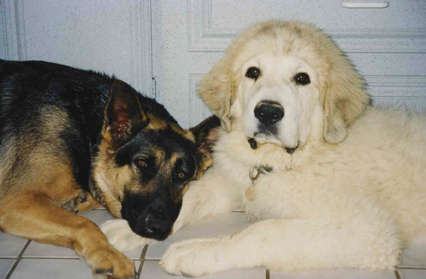
German Shepherd "Bear" with Great Pyrenees pup "Shadow" already best buddies
Our Pyrs follow the type of the original 'mountain dogs'. Our Great Pyrenees offspring are bred from parents who have retained the large size and gentle nature of their ancestors. Our Pyrs are chosen from parents who still carry the rusticity of the dogs of the past. Preserving the breed as it was in the days of its ancestors is a trait that we have chosen to keep. We have produced some beautifully badger marked pups with our past litters not to mention some equally beautiful all white pups. The greatest enemy to a Great Pyrenees is boredom as they are at their happiest when they have a job to do. Their ability as a working dog is formed from a strong instinct passed down from their ancestors. A Great Pyrenees is certainly not the type of family dog that will allow itself to be ignored . They enjoy being an integral part of their owners daily routine and to love a Pyr is to make it so! Despite their majestic size these dogs will spring into action at the first sign of danger to their 'bonded' family, whether it be animal or person. The presence of a Great Pyrenees is enough to make any would be predator or intruder think twice!
Why should you choose a Great Pyrenees to be your future companion? There may be many answers to this question. In our opinion you will most likely find it when you next look into the gentle brown eyes of a Great Pyrenees pup!
Below - photos of our animal family that our Great Pyrenees helped us protect from predators:

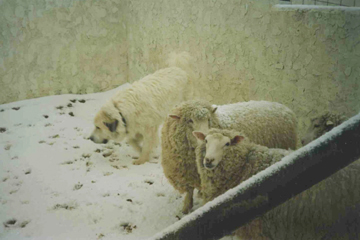
The Great Pyrenees and mastin gang - ever vigilant and on guard & Shadow with the Cheviots in winter
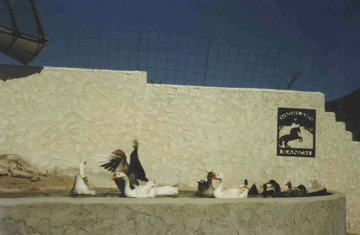
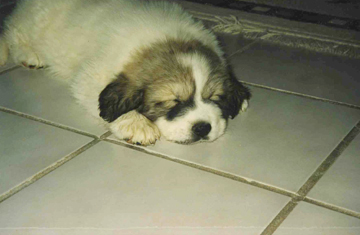
The pond is the playground for our two legged friends & Shadow takes a quick nap
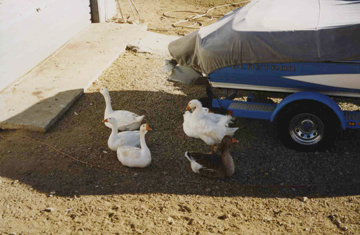
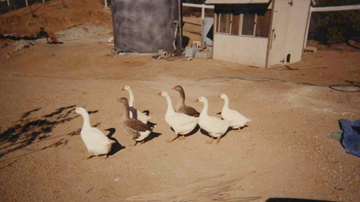
The geese are never bothered by those that protect them
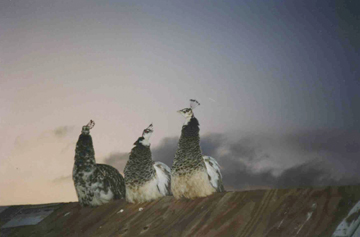
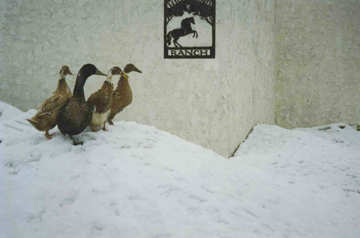
The peafowl have the perfect roosting place and the Scottish runner ducks are always happy to pose for the camera

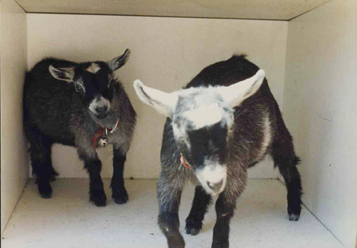
These ducklings will soon find their way to the pond & Pygmy goats "Trixie" and "Pixie" check out a new hiding place
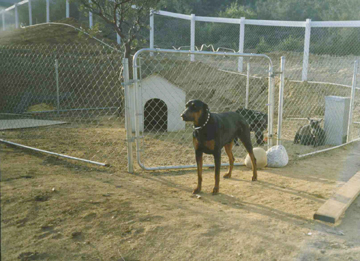
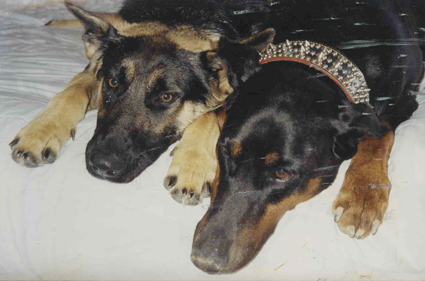
On guard! "Dobie" takes his duties seriously & hanging out with buddy "Bear"
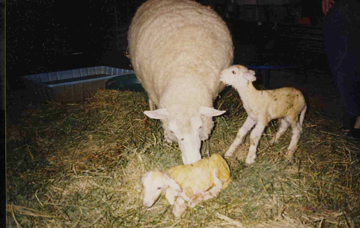

Cheviot sheep "Hey Ewe" with her first twins & mom and girls in the snow
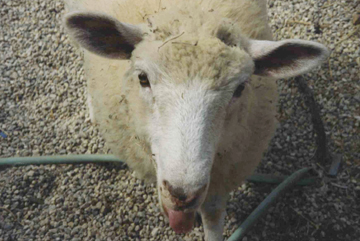
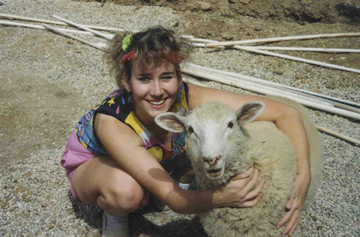
"Hey Ewe" is always happy to have her photo taken!
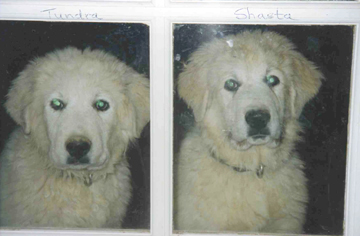

Great Pyrenees pups "Tundra" and "Shasta" & the horses having fun in the snow

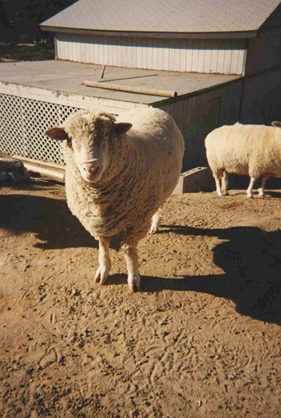
Rescued Arab mare "Cookie" & "Ramses" the ram looking for something to charge
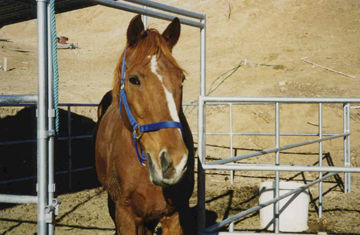
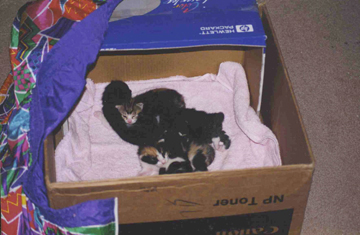
Rescue Thoroughbred gelding "Red Alert" shows off his new halter & orphaned kittens

Our "old lady" in May 2006 at the age of 12 years old - and she still enjoys playing with her Pyr friends.
EXTRACT FROM: 'THE WORLD ENCYCLOPEDIA OF DOGS '
Edited by Ferelith Hamilton; Editor of Dog World (England); breeder, exhibitor
and international judge at championship shows.
Associate editor in America; Mr. Arthur F Jones; for many years Editor
and Editor in Chief of Pure - Bred Dogs, American Kennel Gazette; author
and editor of many books on dogs; well - known television and radio commentator
on dogs.
Color: The assumption that the pure bred Pyrenean must be white is erroneous.
The permitted colors are all-white or mainly white with markings of badger,
gray or varying shades of tan, mainly on the head, or at the root of the
tail. Badger, or blaireau, as it is called, is an admixture of brown, black,
gray and white hairs and is common in puppies, but generally fades on maturity.
Patches of pure black are not admitted in the show ring, although black
and white dogs sometimes appear in correctly color-bred litters. The desired
jet black nose, lips and eye rims still cannot be maintained in successive
generations of all-white dogs without breeding back to the colored mountain
type. It is noticeable that not only pigment but increased size and vigor
become apparent when color is introduced into the all-white strain, and
in spite of the lack of scientific support for the fact, all-white breeding
tends to produce progressively smaller Pyreneans.
EXTRACT FROM: 'THE WORLD ENCYCLOPEDIA OF DOGS'
Standards: The first Pyrenean Standard to be generally accepted was laid
down by the Reunion des Amateurs de Chiens Pyreneens, shortly after the
First World War. When breeding began in America in the early 1930's, the
French Standard was translated and accepted as it stood, but in 1935 it
was replaced by a new one which contained a significant number of omissions
and alterations, one of which, to the detriment of the breed, lowered the
minimum height by 2 cms. Another alteration included the head, with the
shorter muzzle favored in England and America, but which is not acceptable
in France, where the longer foreface is considered correct. It was the
American Standard which, a few years later, was adopted in its entirety
by the Pyrenean Mountain Dog Club of Great Britain, apparently without
further reference to the original French translation. Essentially, however,
all the Standards call for a dog of great size (27" to 32" for
dogs, 25" to 29" for bitches), strongly built, but with a certain
elegance and a kindly disposition. He should have a thick double coat,
with a fine white undercoat and a long, flat outer coat of a coarser hair.
Black on nose and eyerims and an unbroken black mouth line are also necessary.
In the all-white dog good pigment would ideally be linked with black pads,
nails and palate. Double dew-claws on the hind legs are a distinguishing
feature, and their removal constitutes disqualification in the show ring.
®1996 Highlands